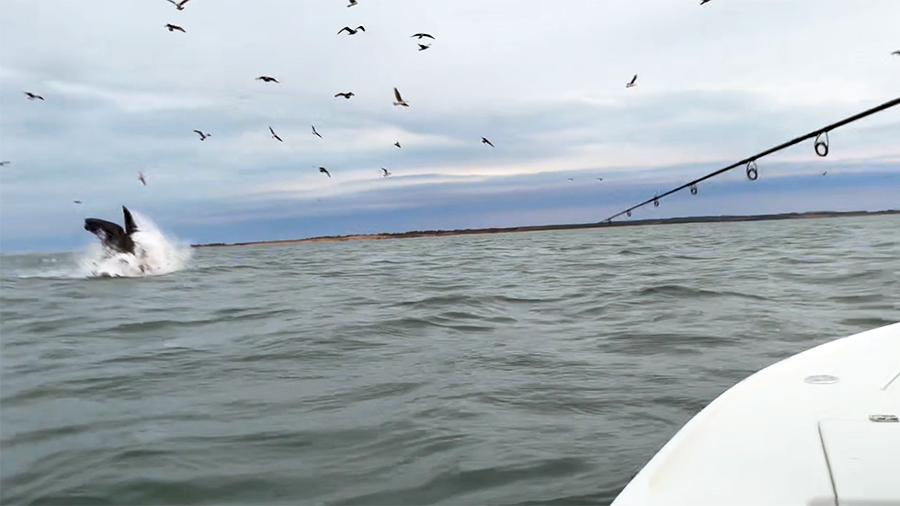 For the past 40 years, Sagamore Rowing Association in Oyster Bay has trained thousands of rowers. Operating out of a historical building overlooking the bay which holds more than 80 rowing boats, called shells, they’ve trained Olympians, National Team medalists—and me.
For the past 40 years, Sagamore Rowing Association in Oyster Bay has trained thousands of rowers. Operating out of a historical building overlooking the bay which holds more than 80 rowing boats, called shells, they’ve trained Olympians, National Team medalists—and me.
On Sagamore’s list of the Top 10 Things to Know About Rowing, No. 6—it only looks easy—is the golden nugget. Rowing takes technique and to fully master it, me and seven other students head indoors to use the rowing machines.
For those who have never rowed before, it’s not as simple as just moving the oars. No. 1 on the list—even though it looks like an upper body sport, rowing is all in the legs.
The instructor tells us what we’ll have to do when on the boat: Push hands forward, oars flat on the water. Reach as for forward as possible. Bend your knees so the seat moves all the way up. Roll your wrists so the oars are parallel above the water. Pull the oars back. Lean back. Repeat.
There are two kinds of rowing—sweep, where each person has one oar and uses two hands to control it, and sculling, where each person has two oars, one on each side for each hand.
For our first ride we are sculling, with four people in a shell. But we have to get the shell to the water first—a shell that is nearly 40-feet long (and less than 2-feet wide) and weighs more than 100 pounds. There are dozens of them stacked on racks from floor to ceiling. We’re using the one on the fourth level. In order to get this monster down, each rower stands equal distance apart. And balances their portion of the weight on their shoulder. I’m only 5’2” tall, so I’m one of the not-so-lucky ones who gets the end where all the weight tends to fall.
With the metal of the shell digging into my shoulder and my arms not strong enough to lift it off, I try to slide a few fingers between my bone and the sharp edge and we inch down a hill to the water.
The thing I’ve learned about hills, especially from riding my bike around the North Shore, is that when you go down one, no matter how hard you try to avoid it, you’re going to end up climbing another one on the return trip. But I’d worry about that later.
Now we not-so-gently get the shell in the water and four of us have to balance our way into our seats without flipping over. Because that would be embarrassing and there would be plenty of greater opportunities for that later. After a few rocky steps, we all manage to get in perfectly. Now it’s time to figure out how to move.
Not only do you have to follow the above rowing steps in the right order, but you have to do it in sync with three others in order for the shell to actually go anywhere. This is harder than it looks.
As bullet No. 6 continues, “Great rowing looks graceful and fluid, but don’t be fooled. Pulling oar blades smoothly and effectively through the water while balancing a boat that may be as narrow as 11 inches; across with 10-12 foot oars is very difficult work. Watch how quickly that graceful motion before the finish line turns into pain and gasping for air afterwards.”
Oh, and the shell only moves backwards.
By the third lesson, we were a well-oiled machine and my right shoulder was turning from purple to black. It was the return from the water that did the most damage. On those uphill walks all the weight of the boat would fall to me on the back end. But I was getting used to it and the next day we had proved to our instructor that we were capable of venturing out for our first distance trip on the water.
At the time I was answering the news desk phone and couldn’t leave till 6 p.m. So in order to make sure I was on time for our trip, I changed into my shorts and t-shirt and sneakers under my desk so I could leave at six on the dot. My friend Lauren, who signed us up for the lessons, was waiting downstairs. I jumped in her car and we headed to the water.
As we got closer, the weather wasn’t looking too good. This was our last lesson and lightning would mean the end of our trip before it ever began. When we got there, the wind had kicked up and it was thundering. Trip canceled. It was back to the boathouse to work indoors. The thunder got louder. On my phone I could see there were tornado alerts for our area. But I’ve seen those before, and never once on Long Island have I ever encountered a tornado. No one else seemed concerned about it, and neither was I.
Then the rain came and turned into torrential downpours. The wind was crashing against the boat house and thunder shook the ground. As the rest of our group continued rowing on the machines, Lauren and I were planning an escape route. I peaked out of the boat house, and there was a huge gray mass that looked like smoke and it was coming down from the sky and touching the water, the same water we were supposed to be rowing merrily merrily merrily merrily down.
We had no idea what it was but with 5 minutes left to the lesson, we took off. The next morning I put the TV on and the first thing I heard was that a water spout, essentially a tornado made of water, had touched down in Oyster Bay the evening before.
So, the bad news—our rowing trip never got off the ground. The good news—neither did we.































